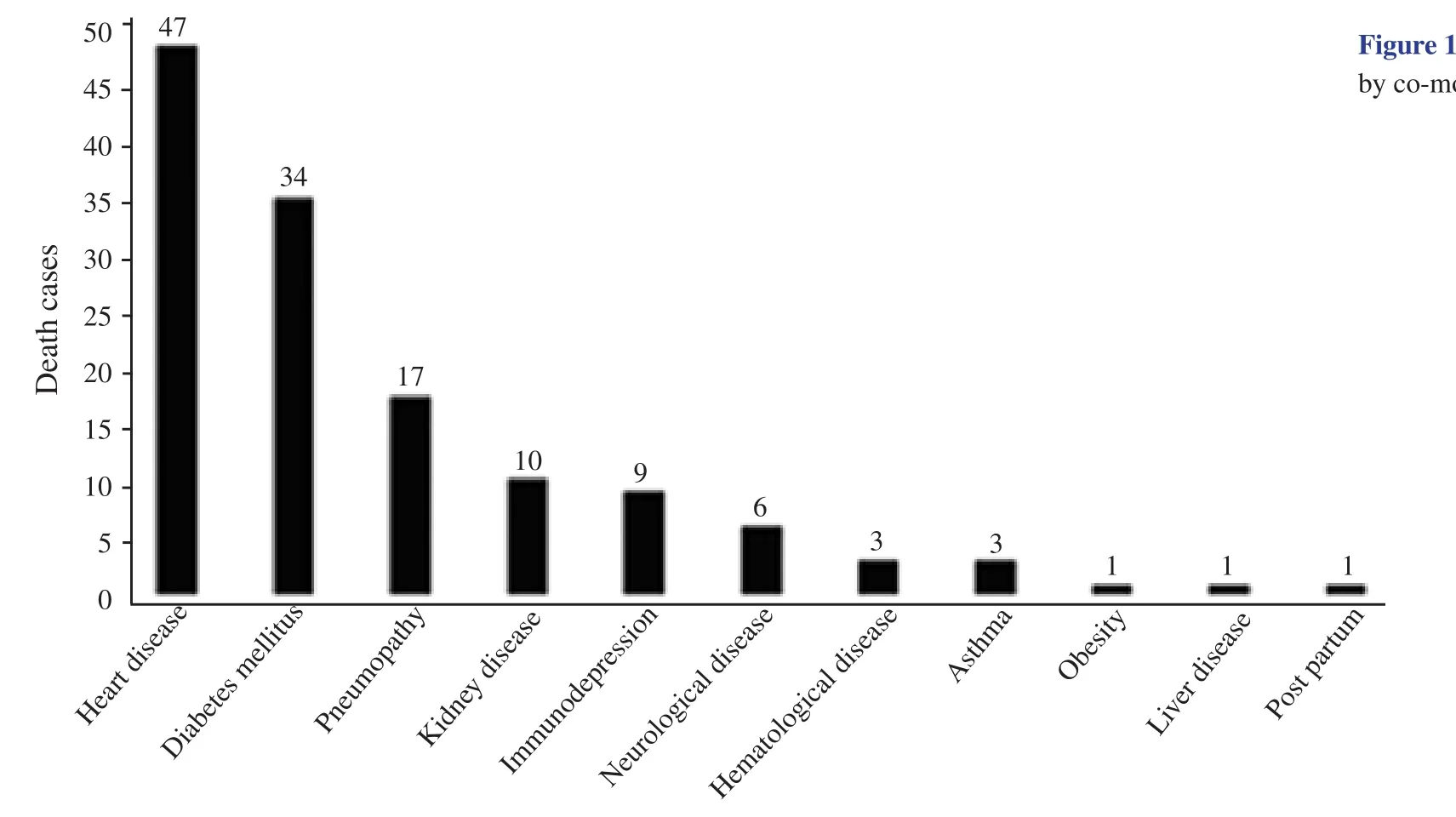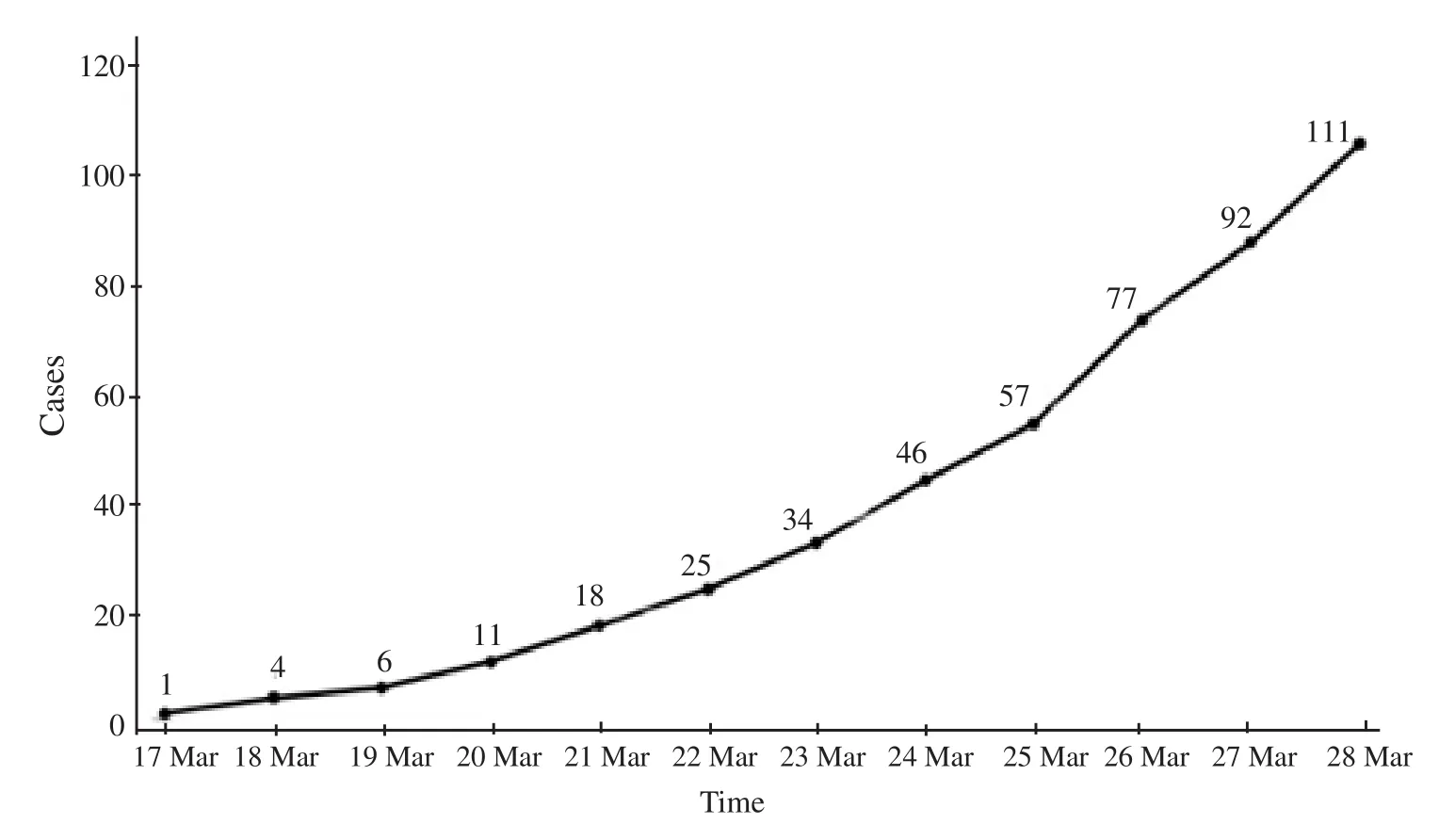COVID-19 in Brazil: Epidemiological update and perspectives
Marli C Cupertino, Graziela A Cupertino, Andréia P Gomes, Nicholas AJ Mayers, R Siqueira-Batista,
1Medical School, Faculdade Dinamica do Vale do Piranga, Ponte Nova, Minas Gerais, Brazil
2Laboratory of Epidemiological and Computational Methods in Health, Department of Medicine and Nursing, Universidade Federal de Vi?osa, Vi?osa,Minas Gerais, Brazil
3Department of Veterinary Medicine, Universidade Federal de Vi?osa, Vi?osa, Minas Gerais, Brazil
Coronaviruses are RNA viruses (Family: Coronaviridae)constituents of a significant number of viruses that provoke diseases in animals and human beings. There are four genera of these microorganisms: Alphacoronavirus, Betacoronavirus, Deltacoronavirus and Gammacoronavirus. From this group, the alpha- and betacoronaviruses are designated as human coronavirus (HCoV) for their propensity to infect human beings[1].
Since the late 1960s, seven HCoVs have been identified and documented, including HCoV-229E, HCoV-OC43, HCoV-NL63,HCoV-HKU1, SARS-COV, MERS-COV and more recently severe acute respiratory syndrome coronavirus 2 (SARS-Cov-2).Although these cited pathogens are more associated with a variety of respiratory symptomatology and to a lesser extent intestinal processes, they can also infect other systems. HCoVs are recognized as one of the principal viral infectious agents of the common cold,only second to the Rhinovirus. Moreover, infections from these pathogens can also cause more unusually severe complications[2].The most recently documented epidemics of HCoVs have alerted the public about the potential lethality and the emerging manifestations[3,4].
Epidemiologically, the earliest outbreak of notable relevance was in November 2002 in Guangdong Province, the People’s Republic of China. There, the SARS-CoV was impelled by the rapidly global dissemination, affecting about 8 000 individuals with approximately 800 deaths. In the following year, the epidemic was regulated and since 2004, there had been no registered cases of SARS[5].In the Middle East, an undiscovered coronavirus was emerged with a distinct disease expression in September 2012, denominated the Middle East respiratory syndrome. Additionally, several cases of the unknown disease arose across the Arabian Peninsula, advancing through four continents, including Asia, Africa, America and Europe.Till January 2020, the total number of confirmed and reported cases to the World Health Organization (WHO) were 2 519, with 866 deaths[5,6].
Furthermore, in December 2019, within less than 5 years after the last coronavirus outbreak, the ambiguous origin of several cases of pneumonia were diagnosed, suggesting the emergence of a new CoV and consequent epidemic. Subsequently, in January 2020,researchers ascribed this novel manifestation as the 2019-nCoV,which was later classified as the SARS-CoV-2. This new infectious disease, the coronavirus disease 2019 (COVID-19), with its augmented dissemination power, has elicited worldwide measures towards its contention, considering that it has globally afflicted several countries, including Brazil. On the 11thMarch 2020, the WHO characterized the COVID-19 as a pandemic given its distinct symptomatology and propagative velocity[2].
The first documented case of COVID-19 in Brazil was diagnosed on the 26thFebruary 2020 in S?o Paulo City. The patient was male,61 years old and recently returned from a 13-day trip (from 9thFebruary 2020 to 21thFebruary 2020) to the Lombardy, Northern Italy, where he exhibited mild respiratory symptoms. He was then instructed, along with 30 relatives, to remain in domicile isolation,where they were kept under surveillance. Despite this patient fitting some of the criteria of those individuals that are more susceptible to the disease-being old and hypertensive, the disease did not progress to more severe state, facilitating the possibility of a cure[7].

Figure 1. COVID-19 deaths stratified by co-morbidities in Brazil.
On the 29thFebruary 2020, the second COVID-19 case was confirmed in the country, sharing similar aspects with the first: male,32, from S?o Paulo, recently arrived from Italy and demonstrated mild respiratory symptoms. Once again, this case did not progress to more severe complications following the domicile isolation.On the 5thMarch 2020, Brazil registered the first two cases of local transmission (identified origin of transmission), which were diagnosed again in the city of S?o Paulo. These two patients did not have recent travel records, however, both did have direct and indirect contact with patient zero; one is a relative of and had direct contact with said patient zero while the other was contaminated through this relative. A few days later, cases of community transmission of the disease were reported in the States of S?o Paulo, Rio de Janeiro and Bahia, where an unidentified source became a vector in its own community[7].
In accordance with the documented reports till the 27thMarch 2020,Brazil had 3 027 confirmed cases with 92 deaths. Moreover, from an analysis of 85 patients of the confirmed deaths, it was revealed that 76 were over the age of 60, 6 were aged 40-59 and 3 were aged 20-30, which signifying that in every 10 deaths, 9 were amongst individuals of 60 years and older. This analysis also indicated that about 65% of the deaths were males with the remaining 35% being females and the fact that 85% of these individuals exhibited at least one susceptibility to the COVID-19. Additionally, it was also noted that several of the patients were comorbid and/or demonstrated a medical condition, as shown in Figure 1[7]. Nevertheless, as this pandemic is still in full swing, changes to targeting other age groups and augmented lethality are still ever-present.
The disease has a 2.7% fatality in Brazil in the Southeast Region of the country, which constitutes the most populous cities and major financial centers, leading the national ranking. There are 1 952 confirmed cases in the Southeast, 145 in the North, 539 in the Northeast and 318 in the Central-West Region[7]. A cumulative analysis of the confirmed cases and deaths are presented in Figure 2 and Figure 3,respectively. The major concern right now is an alarming number of suspected cases, gradually increasing daily with thousands of individuals awaiting verification from their tests results. It is worth mentioning that the number of local transmission is escalating incrementally as well, which could incite critical changes over the coming days[7].
Given the current outlook, Brazil can be considered as extremely vulnerable to the COVID-19 pandemic, in the event that stringent public health measures are not adequately implemented, cognizant of its continental dimension and ancestral socioeconomic inequality ubiquitous to the Brazilian society[8,9]. Although the outbreak has been prevalent in the most populous and economically developed region of the country (Southeast), there is no sufficient diagnostic tests available for those patients presenting mild symptoms, which may encumber the classification of cases and the progression of the pandemic[7].
Brazil possesses a universal health care model denominated Unified Health System (Sistema único de Saúde-SUS), which offers full coverage to all citizens, in all situations. The Brazilian government has taken precautionary measures, underscoring the anticipation of the influenza vaccine application, to diminish the number of cases of this disease and to avoid the potential perplexities derived from the differential diagnosis between influenza and COVID-19.The management of the problem is also important in terms of public health, given the potential increasing cases of severe acute respiratory syndrome (due to influenza). Thus, in addition to protecting the groups most susceptible to influenza, the movement in health units would be reduced, contemplating the occurrences of COVID-19[7]. Other preventive measures were implemented, such as social distancing from the population, encouraging respiratory etiquette, hand washing and 70% alcohol use. In addition,emergency measures were adopted to expand hospital units, acquire new respirators and train laboratory personnel to execute diagnostic tests. However, these efforts will be futile without the agglutination of both the society and political authorities[2].

Figure 2. Cumulative cases by COVID-19 over time in Brazil.

Figure 3. Cumulative deaths by COVID-19 over time in Brazil.
The situation becomes more complex when examining the impoverishment in several peripheral areas (both urban & rural) of the country, considering (1) the lack of basic amenities (e.g. potable water), (2) the great population density and (3) the socioeconomic disparities; as well as circumstances which facilitate the propagation and dissemination of COVID-19[8]. Another potentially exacerbating factor is the possibility of the SARS-CoV-2 invading the indigenous populations, of whom in theory would be more susceptible to be infected by the virus; as witnessed in the H1N1 pandemic in 2009,which showed their significant vulnerability to distinct pathogens[10].
What are the proposals for coping with COVID-19 in Brazil, based on what has been described in the world? It can be highlighted, as extremely necessary, the adequate organization of the health systemstructuring of primary health care, training of professionals, scaled supply of medical equipment (for example, personal protective equipment) and expansion of the hospital network, so as to manage the high demand of patients in the coming weeks. Other important strategies dependent on the awareness of the political class and society are isolation of sick people, rigid surveillance and quarantine,closing of schools & non-essential businesses, changes in workplace etiquette, travel restrictions and the prohibition of large gatherings.These are key actions for reducing the number of deaths due to the COVID-19 pandemic in Brazil. The adoption of policies to counter the harmful effects of the pandemic on the economy is also essential for tackling the pandemic. The economic recession conceived by the pandemic will be inevitable and global. Social protective measures, providing minimum wage income for workers and income supplement for vulnerable individuals are paradigms from worldwide populations, and should be adopted immediately[2,8,9].
The failure to comply with international recommendationsemphasis on the propositions cited by the WHO[2,9] could cumulatively potentiate the catastrophic evolution of the disease, in which the number of patients will be greatly increased. The deaths will be the result of the crisis, in a gloomy predicament, as in Italy,Spain and, more recently, in the United States of America[2].
The world is slowly adapting to the afflictions of COVID-19 and there is no magic recipe to confront the pandemic in Brazil. What is essential at this time is the search for all the necessary tools that science can provide, in an attempt to understand the transmission dynamics of the disease and to mitigate the envisaged afflictions to the Brazilian economy, health system & society, until fundamental therapeutic and prophylactic measures (vaccines) are attainable.
Conflict of interest statement
The authors declare that there are no conflicts of interest.
Authors' contributions
MCC and RSB conceptualized and designed the study. GAC also drafted the first manuscript. APG and NJM designed and reviewed the final manuscript for intellectual content. All authors participated in the study, designed and reviewed the final manuscript for intellectual content. All authors are responsible for the integrity of the data.
 Asian Pacific Journal of Tropical Medicine2020年5期
Asian Pacific Journal of Tropical Medicine2020年5期
- Asian Pacific Journal of Tropical Medicine的其它文章
- The coronavirus disease 2019 (COVID-19) pandemic: A review and an update on cases in Africa
- Current trends in the epidemiology and management of enteric fever in Africa: A literature review
- Outpatient prevention counseling for malaria in northwest Nigeria: A single-centre descriptive cross-sectional study
- Lesson learned: Retrospective analysis of ‘missed out’ dengue NS1 positives among IgM negative population
- Spatial distribution of cutaneous anthrax in western Iran from 2009 to 2016:Geographic information system mapping for predicting risk of anthrax outbreaks
- Mathematical modelling of COVID-19 in South Africa
